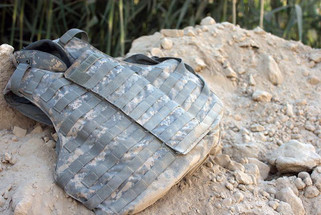Posted by Case Smien on 8th Jun 2023
The Advantages and Disadvantages of Kevlar vs UHMWPE Body Armor
Body armor plays a crucial role in protecting individuals, particularly those in law enforcement, military, and security professions. In recent years, two popular materials have emerged as leading contenders in the realm of ballistic protection: Kevlar and Ultra High Molecular Weight Polyethylene (UHMWPE). In this blog post, we will delve into the advantages and disadvantages of both Kevlar body armor and UHMWPE body armor, enabling you to make an informed decision when considering which option suits your needs best.
Kevlar Body Armor:
Kevlar, developed by DuPont, is a well-established synthetic fiber that has been widely used in body armor for decades. Here are some of its key advantages and disadvantages:
Advantages of Kevlar Body Armor:
a. Proven Track Record: Kevlar has a long-standing reputation for its effectiveness in stopping bullets, thanks to its high tensile strength and excellent energy absorption properties.
b. Resistance to Cuts and Slashes: Kevlar is resistant to cuts and slashes, making it highly suitable for protecting against sharp-edged weapons.
c. Comfortable and Flexible: Kevlar body armor offers good flexibility, allowing ease of movement and enhanced comfort during extended wear periods.
d. Thermal Stability: Kevlar retains its protective qualities even under high temperatures, making it suitable for use in various environments.
Disadvantages of Kevlar Body Armor:
a. Bulky and Heavy: Kevlar body armor can be quite heavy and bulky, which may hinder mobility and agility in certain situations.
b. Water Absorption: Kevlar has a propensity to absorb water, which can reduce its ballistic performance and increase its weight when exposed to wet conditions.
c. Limited Multi-Hit Capabilities: While effective against most common threats, Kevlar body armor has limitations when facing multiple high-velocity impacts in a concentrated area.
Ultra High Molecular Weight Polyethylene (UHMWPE) Body Armor:
UHMWPE is a newer material gaining popularity due to its exceptional ballistic performance. Let's explore its advantages and disadvantages:
Advantages of UHMWPE Body Armor:
a. Lightweight: UHMWPE body armor offers remarkable weight reduction compared to Kevlar, allowing for increased mobility and decreased fatigue during prolonged use.
b. Enhanced Multi-Hit Capability: UHMWPE exhibits excellent multi-hit performance, as its molecular structure disperses and absorbs the energy of impact across a wider area.
c. Reduced Backface Signature: UHMWPE can minimize the energy transferred to the wearer, reducing the risk of injury and trauma caused by the backface deformation of the armor.
d. Resistance to Water Absorption: Unlike Kevlar, UHMWPE has superior resistance to water absorption, maintaining its protective properties even when exposed to wet conditions.
Disadvantages of HMWPE Body Armor:
a. Vulnerability to Sharp-Edged Weapons: UHMWPE is generally less effective than Kevlar when it comes to protecting against sharp-edged weapons due to its reduced resistance to cuts and slashes.
b. Lower Heat Resistance: HMWPE may experience a decrease in ballistic performance when exposed to high temperatures, which can be a concern in certain operational environments.
c. Cost: HMWPE body armor tends to be more expensive compared to Kevlar due to the complexity of its manufacturing process and advanced materials used.
Conclusion: Both Kevlar body armor and Ultra High Molecular Weight Polyethylene (UHMWPE) body armor offer distinct advantages and disadvantages. Kevlar has been on the market longer and is known for cut resistance and thermal stability; while UHMWPE offers lightweight design, enhanced multi-hit capability, and reduced backface signature. Choosing the right body armor material depends on your specific requirements and operational context. In general, we recommend PE, but this does not fit the bill for everyone. Evaluating the advantages and disadvantages outlined in this article will help you make an informed decision to ensure your optimal protection.
Remember to consider factors such as comfort, weight, threats faced, and budgetary constraints when making your selection. Ultimately, both Kevlar and UHMWPE body armor contribute to the ongoing advancements in protective gear, pushing the boundaries of personal safety and ensuring the well-being of those who rely on these technologies to perform their vital duties in high-risk environments.

